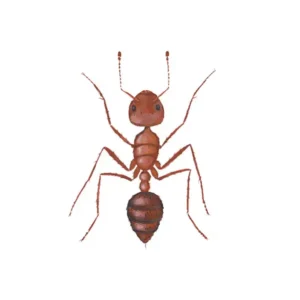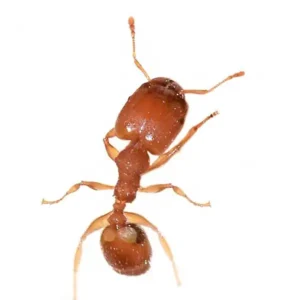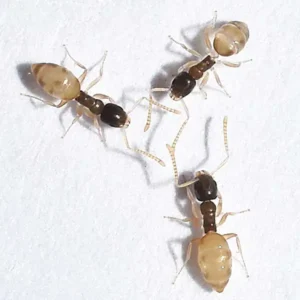Ants are the most common pest in the home and workplace – and not just here in Florida, but everywhere in the world. Although ants are frequently seen indoors, most ant activity occurs outdoors where they forage on small insects and other small organisms. However, in their neverending quest for resources for their colonies, they may end up coming into your home.
In this article, let’s talk about the kinds of ants you’re most likely to find in Florida.
What kinds of ants live in Florida?
In the Tallahassee area, Caribbean crazy ants, fire ants, big-headed ants, ghost ants, and Florida carpenter ants are the most common you may experience. Here’s what you should know about them.
Caribbean Crazy Ants
- Experts believe that Caribbean crazy ants were introduced by accident into Miami in the 1950s.
- Crazy ants gained their name because of their erratic behavior, running around quickly while searching for food and water.
- They clump together after they die, blanketing sidewalks, around the base of buildings, and on your property.
- Unlike many types of ants, they have multiple queens and live in the millions together without fighting for territory.
- Electricity is an attractant for Caribbean crazy ants. This leads to greater problems when they follow electrical conduits indoors or around your property through tiny cracks and crevices. If you’ve been experiencing short circuits, it could result from Caribbean crazy ant nesting.
- They do not bite or sting, making them a nuisance pest for humans rather than a direct health threat.

Fire Ants
- Invasive species from South America. In the United States, fire ants currently inhabit much of the southern half of the United States, including Florida.
- Fire ants build nests that look like large dirt mounds, which if disturbed will explode with ants ready to attack.
- They are known for their stings that are said to create a painful, burning sensation. The effects of being stung by a fire ant can last up to 10 days, and even longer for those who are allergic.
- Fire ants are highly aggressive and go after humans, pets, and wildlife. If you are unlucky enough to encounter fire ants inside your home, they’re likely going after dirty laundry, sweets, proteins, and fats.
 Big-Headed Ants
Big-Headed Ants
- Big-headed ants have, you guessed it, disproportionately big heads.
- Their elaborate network of tunnels can connect hundreds of subcolonies, creating supercolonies that expand over large surface areas.
- Common nesting sites include potted plants, planters, under slab foundations and rocks, and inside rotted logs. Big-headed ants do not create structural damage or sting.
- Biting is possible but rare.
- They are more of a nuisance pest due to the tubes and piles of sandy soil left behind while building foraging tunnels.
Ghost Ants
- Ghost ants are tiny ants with pale bodies, legs, antennae, and a dark head and abdomen. Measuring less than 1/16 inch, ghost ants are difficult to see.
- They’re especially bothersome for Florida homeowners when they get into pantry items and nest in walls.
- You may see ghost ants trailing in search of crumbs. Sweets like cakes, sugar, and syrups, as well as honeydew secreted from pests such as whiteflies, are known to attract ghost ants.
- Ghost ants do not possess stingers, and they only bite when disturbed. In general, they are more of a nuisance pest than anything.
Florida Carpenter Ants
- Florida carpenter ants are bicolored with rust and dark colors, and much larger than common nuisance ants.
- According to the University of Florida, “Florida carpenter ants seek either existing voids to nest or excavate only soft materials such as rotten or pithy wood and Styrofoam.”
- Although Florida carpenter ants do not eat wood, they do remove it from excavating sites to build their galleries.
- Indoors, preferred nesting sites are areas with high levels of moisture including vents, attics, carpets, ceilings, gutters, sheds, under dishwashers, under bathroom fixtures, and wall voids.
Dealing with Ants in the Tallahassee Area?
Ants can be tough to avoid in Tallahassee. With our mild weather, they tend to be an all-year pest more than seasonal. And while a few ants are manageable, if it becomes too much, they can quickly begin affecting your quality of life.
When that happens, Capelouto Termite & Pest Control can help. We provide dependable and state-of-the-art ant control services to homes and businesses in Tallahassee. Ready to get started? Call us today for a free estimate.
Common Types of Ants in Florida Termite and Pest Control in Tallahassee FL
Serving Your Pest Needs for over 50 years in Tallahassee FL

 Big-Headed Ants
Big-Headed Ants